Walter Van Beirendonck has always marched to his own drum. The struggles of operating an independent brand cannot be understated: the fate of your business relies on the success of each collection. If you miss two seasons in a row, you’re essentially finished. For someone like Walter, who’s been a part of this industry for over 40 years, to stick to his guns, speak with his heart and build something that truly reflects who he is, is the stuff you dream about when you’re a kid.
And this is the starting point for Walter’s Spring/Summer ‘26 collection, titled “Wink – With Starry Eyes.” “I want to be the starry-eyed boy I always was,” he wrote in the show notes. “Believe in the best of humans. Full of hope for the world. But it’s becoming harder and harder.” He’s tackling the difficulty in maintaining that disposition with the world around us seemingly hellbent on squashing that youthful optimism. “So, what to do when everything turns dark?”
And so, Walter went back to his childhood – that time in our lives where our brains are still soft and plastic, unfixed in our biases and judgement, and even the most ordinary perceptions leave impressions that last a lifetime. For him, this was the ‘60s: the decade of the free-spirited ‘flower child.’ Moptops – the famous hairstyle of the Beatles – appeared throughout the show, and those long dagger collars that surfaced in the late ‘60s and early ‘70s were frequent motifs. The collection opens with a ‘60s coat printed with a bright red and green ERDL camo, the pattern first used by the American military in the Vietnam War; the camo is juxtaposed with massive, dark teal faux fur accents on the collar and cuffs. Underneath, the model is only wearing black and white stockings with rubber black boots.
This opening look sets the stage beautifully for the rest of the collection: I’m not sure the role that mother figures or strong women played in Walter’s upbringing, but this look feels like a young boy who saw his aunt wearing a coat with a massive fur collar and cuffs, and thought, ‘this is the coolest woman ever.’ And the same goes for the stockings. The way the coat fits oversized, with those giant cuffs covering the hands, and how the hemline rests at the knees, is like a boy who raided the closet and played dress-up while mom went out shopping.
This sense of a young boy playing dress-up persists throughout the entire collection (There is plenty of conversation to be had here regarding the notion of gendered clothing and aesthetics, and how one navigates the pressures of adopting the proper signifiers — I’d rather focus on a different idea presented here, which feels new to Walter’s work). Let’s go back to the idea of beauty arising during childhood through the ordinary, and how much of an impression it can leave. One of the dominant motifs in this collection is floral prints. But they aren’t the kind of floral prints that typically decorate luxury garments: they're the florals that you would see in upholstery or wallpaper in homes from the ‘60s. These visual cues are how memory often works. When you think about childhood, or the home of a family matriarch where you would spend holidays or weekends, the memories don’t always consist of tangible events. Those memories are embedded in the warm wallpaper behind the television set during game shows, or the upholstery of the sofa or loveseat that your grandmother would sit in while knitting and dozing off to soap operas. Those memories also come from the red and white tablecloth that covered the dining table, which here Walter turned into a shirt and a smock.

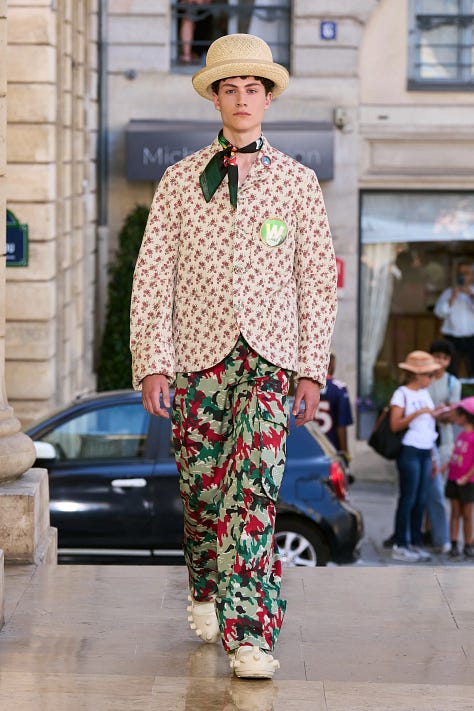
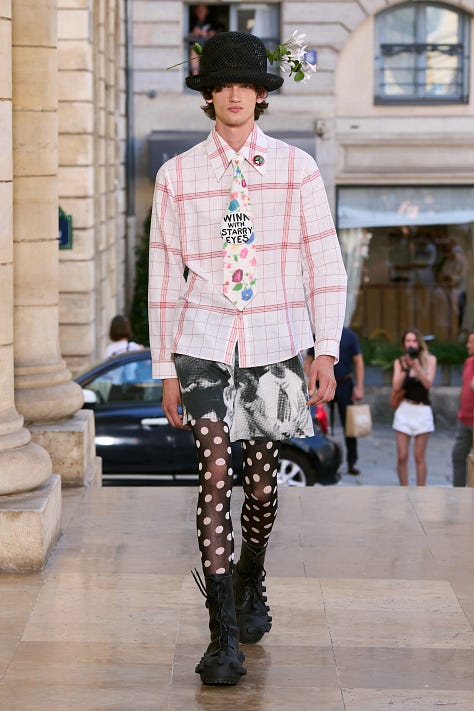
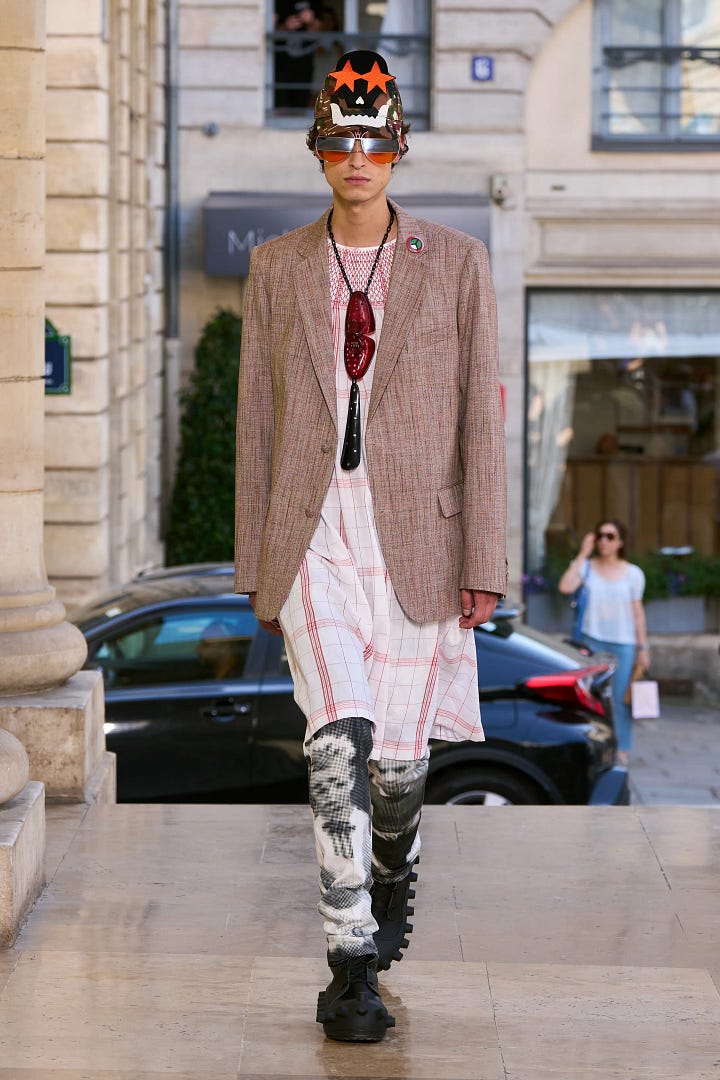
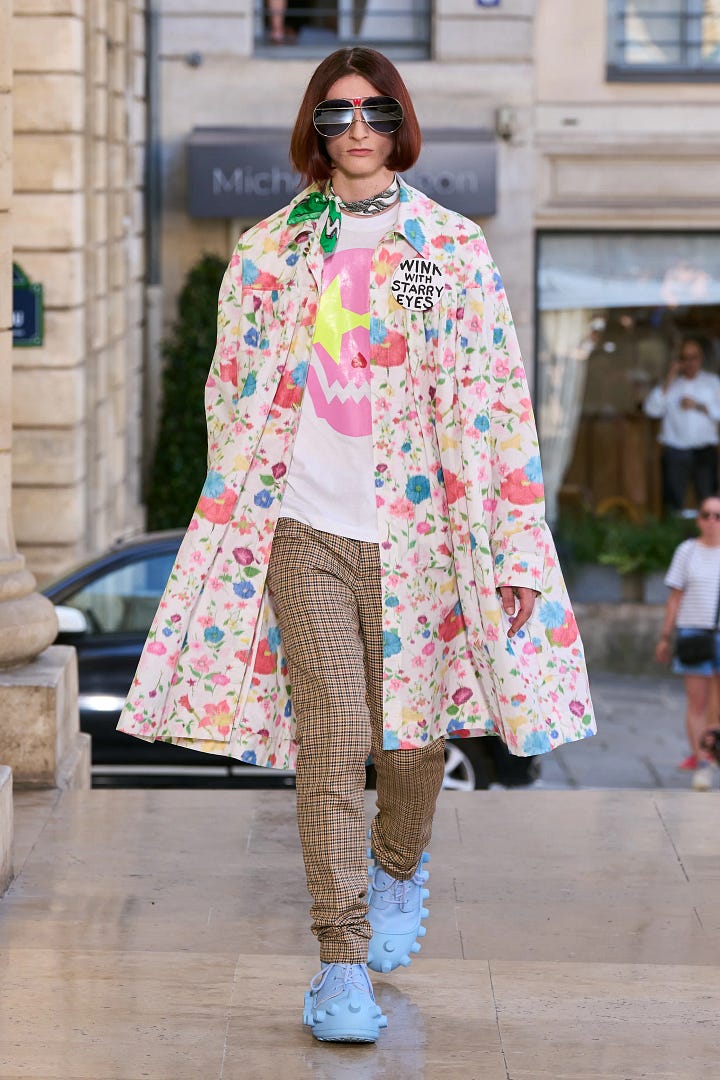
Walter also looked to objects of beauty that seemed so magical during childhood. Combs are worn as earrings; hair curlers are worn as bracelets; shoe horns are made into pendants. Again, it’s like a kid who went into the drawers of their mother’s vanity and withdrew the scepters of her beauty rituals.
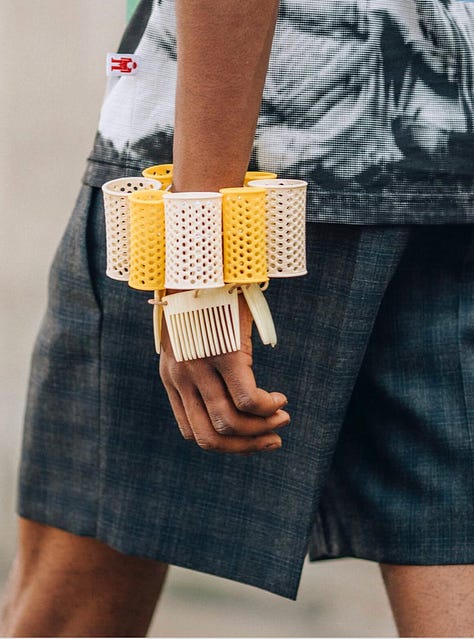


“My own childhood memories surfaced,” the show notes read. “I gathered family photos, made them into glitchy and pixelated prints. Pushed daisies through digital static. Special Ikat textiles carried that distortion.” These photos feel similar to that of the painter Gerhard Richter’s blurry portraits he made when he was still in his photorealistic era, and Richter soon infused these works with eerie and unsettling distortions. The family photos that Walter used for jackets and pants have similar renderings, as if these memories and moments from childhood that he is trying to go back into are lost to time. It’s probably the most somber note contained in an otherwise joyful and playful collection.
Maybe the most crucial aspect of all of this is that Walter is a master fashion designer. He understands how to make extremely well-made clothes, even while drawing from historical costume and pulling references from every direction. In a genius combination of skill and concept, he references skeleton suits, a strange onesie-suit hybrid worn by young boys in the late 18th century and early 19th century. The garment consists of a tailored jacket that is buttoned to trousers at the waist.
Look 14 pulls all of these references together: a skeleton suit, with the jacket printed with distorted photos of young Walter, buttoned to yellow and magenta striped trousers that look right out of the ‘60s. The polka dot shirt underneath has that dagger collar, and the model wears a tied neckerchief, with a ‘60s rockstar haircut and shades. Few designers could pack this much density into a single outfit – the level of construction, historical reference, and conceptual integration – with such disparate and incoherent elements at play, and make it work.

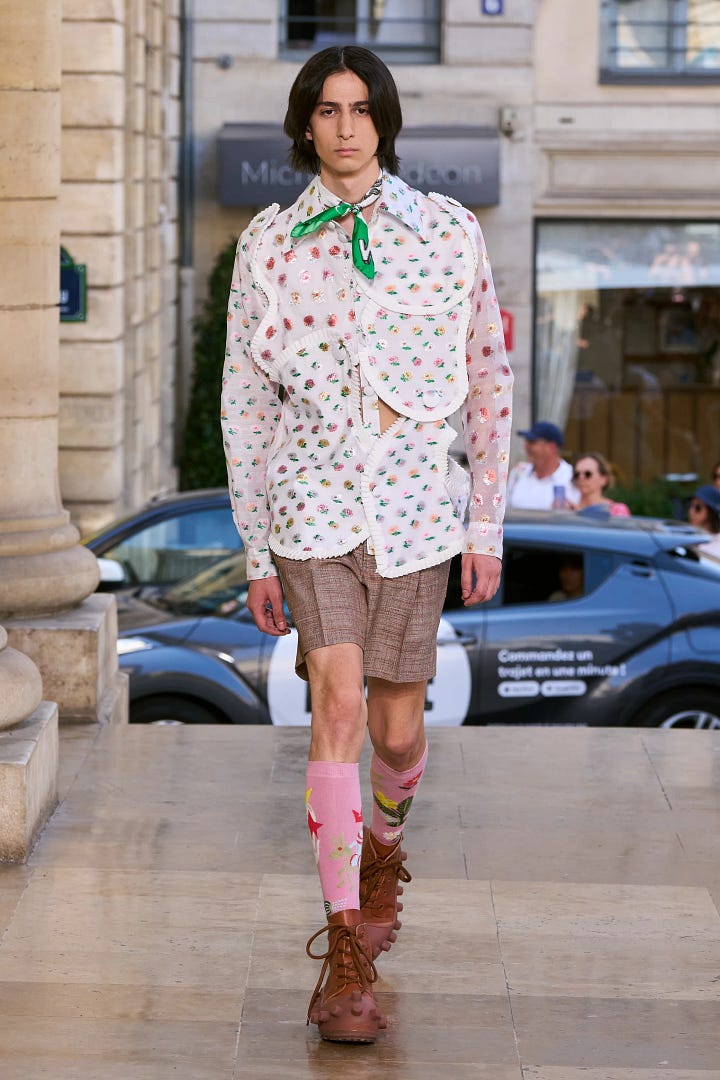

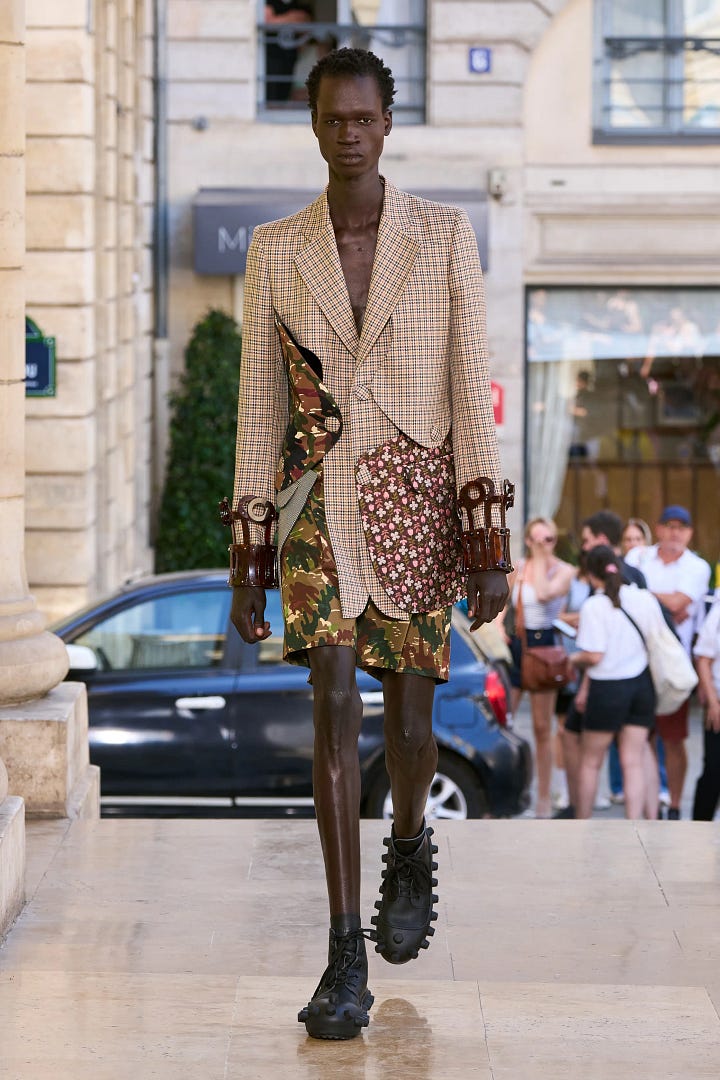
Walter ends the collection with several shirts and jackets that are patched together like, as he says in the show notes, “a Jean Arp puzzle.” The different puzzle pieces use the various prints from throughout the collection, and are arranged in an acutely imperfect order. The pieces don’t come together to create a full, complete garment. This is what Walter is trying to say about reaching back into childhood, reaching back into your earliest memories, searching for some kind of truth that will light the way forward. You have to pull from disjointed, messy, and incoherent fragments. But you never truly find it, at least in a complete, crystallized form. Life is rich, and vibrant, and coarse, and grainy because we never become actualized individuals. We are all searching for the puzzle pieces that will bring us closer to the truth of who we are, who we ought to be. And chances are we will never achieve this. All we can do is march on with a wink and starry eyes into the future. That’s what life is all about.
- Nash, Editor





